
Browse an alphabetical list of photographs. These historical images portray people, places, and events before, during, and after World War II and the Holocaust.
<< Previous | Displaying results 51-72 of 72 for "Photo" | Next >>
View of buildings in the Natzweiler concentration camp. Beginning in the summer of 1943, the Germans detained many "Night and Fog" prisoners in Natzweiler-Struthof. This photograph was taken following the liberation of the camp. Natzweiler-Struthof, France, 1945.
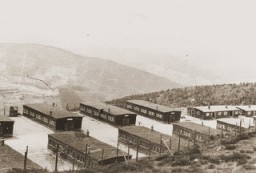
View of the Natzweiler concentration camp. Photograph taken in 1945.
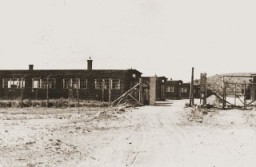
View of the Palace of Justice (left), where the International Military Tribunal trial was held. Nuremberg, Germany, November 17, 1945. The Palace of Justice was selected by the Allied powers as the location for the International Military Tribunal (IMT) because it was the only undamaged facility extensive enough to accommodate a major trial. The site contained 20 courtrooms and a prison capable of holding 1,200 prisoners.
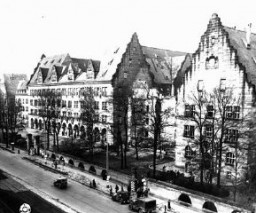
View of a section of the Plaszow concentration camp. Plaszow, Poland, 1943–1944.
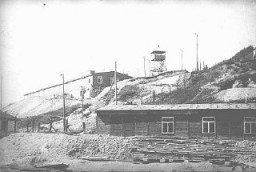
View of the flour mill in Zbaszyn, which served as a refugee camp for Jews expelled from Germany. The Jewish refugees, hungry and cold, were stranded on the border, denied admission into Poland after their explusion from Germany. Photograph taken between October 28, 1938, and August 1939. Warsaw-based historian, political activist, and social welfare worker Emanuel Ringelblum spent five weeks in Zbaszyn, organizing assistance for the refugees trapped on the border.
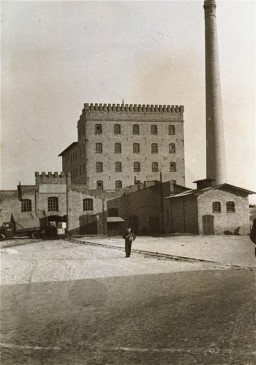
After World War II, the Rothschild hospital in Austria was primarily concerned with the rehabilitation of sick displaced persons. It also served as a lager for political prisoners and as a hostel for 600 refugees.
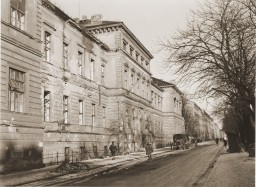
View of the Sobibor camp gate in the spring of 1943. Jews deported to the Sobibor killing center were driven through the gate into the camp on foot, by truck or horse-drawn cart. The train track led through a separate entrance to the right onto the site. Pine branches were braided into the fence to make it difficult to see in from the outside. This image comes from an album and collection kept by Johann Niemann, who became deputy commandant of the Sobibor killing center after holding positions in the…
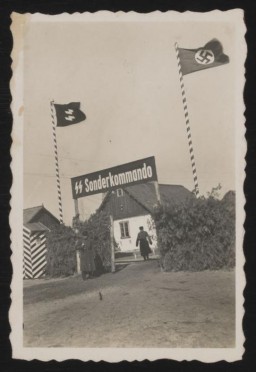
Rare image of the Sobibor killing center, taken from an album of photos belonging to Sobibor deputy camp commandant Johann Niemann.
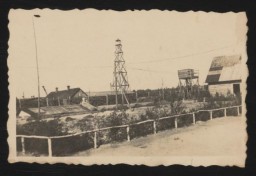
Rare image of the site of the Sobibor killing center, taken from an album of photos belonging to Sobibor deputy camp commandant Johann Niemann.
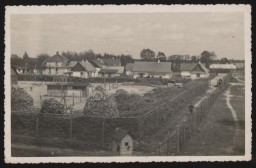
View of the Trawniki training camp showing two barracks and a watch tower. Trawniki, Poland, between 1941 and 1944.
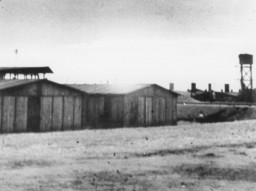
View of the village of Chelmno. To the left of the church is the Schloss, one of two sites of the Chelmno camp. The Schloss, an old country estate, served as the reception and killing center for victims until it was demolished in April 1943. Chelmno, Poland, 1939–1943.
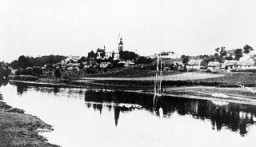
View of the wall enclosing the Esterwegen concentration camp, 1936.
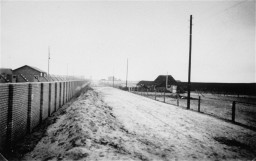
On January 20, 1942, the villa was the site of the Wannsee Conference.
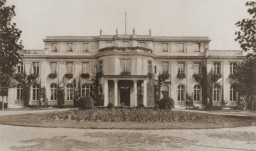
On May 2, 1945, the 8th Infantry Division and the 82nd Airborne Division encountered the Wöbbelin concentration camp. Here, American soldiers patrol the perimeter of the camp. Germany, May 4-May 10, 1945.
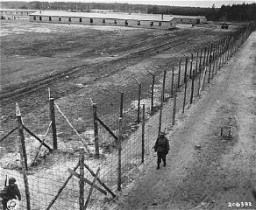
View of the Zeilsheim displaced persons camp. Zeilsheim, Germany, 1947-1948. The Zeilsheim camp was located 12 miles west of Frankfurt in the American-occupied zone of Germany.
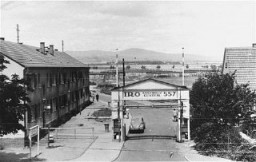
Benjamin Kedar (born Villiam Krausz) sits with a doll and a teddy bear shortly before his family went into hiding. Villiam's parents married in Prague and settled in Nitra, Slovakia. They worked as physicians. They had a daughter, Helen, in 1934, and Villiam in 1938. In 1942 the family relocated to a nearby village until September 1944. At that point, they went into hiding with Slovak peasants to avoid deportation to Auschwitz. Villiam, his sister, and his parents survived the…
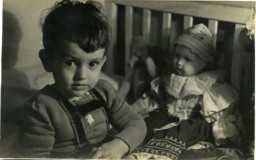
Visitors in the Hall of Witness at the United States Holocaust Memorial Museum. Washington, DC., April 1998.
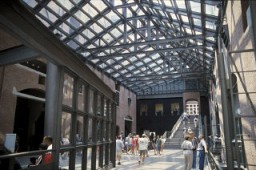
Vladimir Lenin was the leader of a faction of Russian communists known as the Bolsheviks. After the Russian Revolution broke out in 1917, Lenin seized control and established the Soviet Union. Photographed circa 1920. The Nazis had declared themselves the sworn enemies of Bolshevik Russia, its architect and dictator Vladimir Lenin, and his successor Josef Stalin.
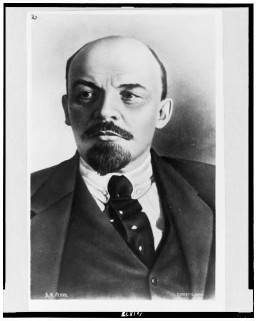
Vladka and Benjamin Meed (center) with President Jimmy Carter at a White House Rose Garden ceremony marking the official presentation of the report of the US Holocaust Commission to the president by commission chairman Elie Wiesel. Washington, DC, September 27, 1979.
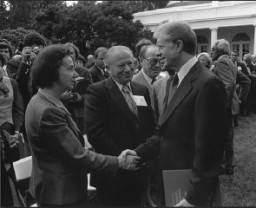
Vladka Meed shakes the hand of President Jimmy Carter at a White House Rose Garden ceremony. The ceremony marked the official presentation of the report of the US Holocaust Commission to the president by commission chairman Elie Wiesel (second from right, with Benjamin Meed, center). Washington, DC, September 27, 1979.
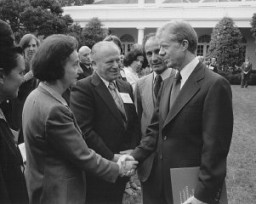
View of the Vught transit camp. Vught, the Netherlands, after September 9, 1944.
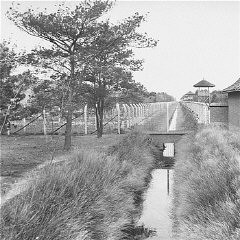
Jewish inmates at forced labor in the Vyhne concentration camp in Slovakia, 1941–44.
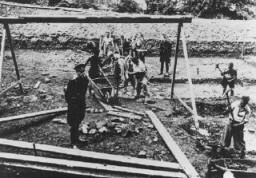
We would like to thank Crown Family Philanthropies, Abe and Ida Cooper Foundation, the Claims Conference, EVZ, and BMF for supporting the ongoing work to create content and resources for the Holocaust Encyclopedia. View the list of donor acknowledgement.